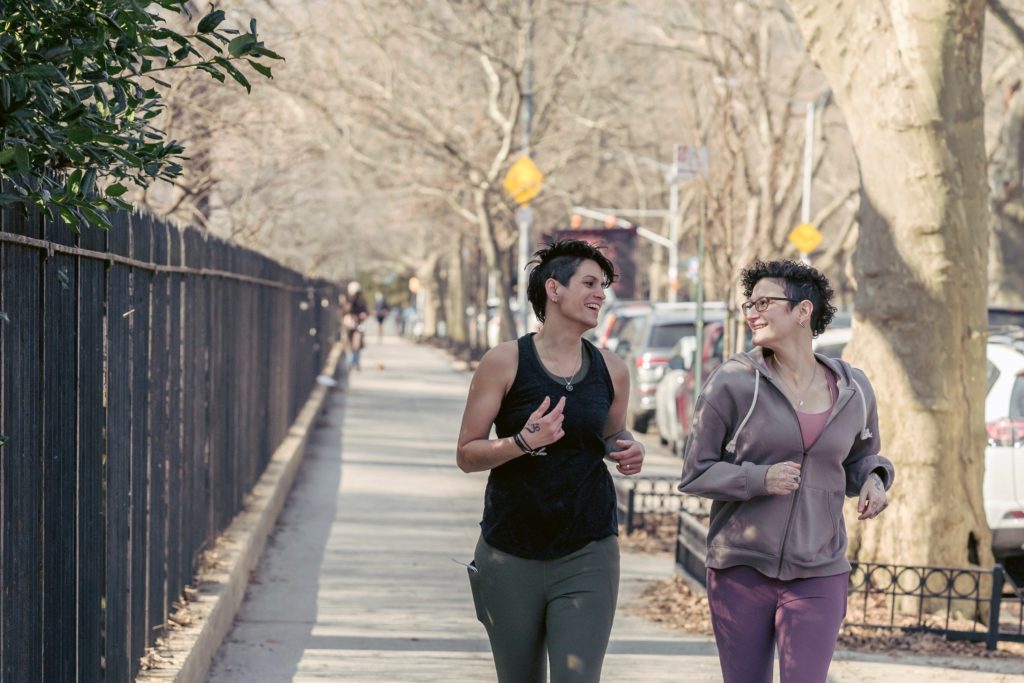
During perimenopause – or the transition period around menopause – our reproductive hormones start to decline, leaving some of us feeling out of sorts. This mid-life drop in hormones can cause a host of potential symptoms – from the more common hot flash or vaginal dryness to the less well-known joint pain or brain fog.
Fortunately, there are things you can do to ease this transition naturally, without the use of hormones or medication (though that may be an option as well). Read on for some simple lifestyle adjustments you can make to start feeling better.
Lifestyle Changes
Note: These are general recommendations only. Everyone’s transition to menopause is unique – what works well for you may not work as well for someone else. It may take some experimenting to find the right solutions for your needs.
Modify your diet
We know – changing your diet isn’t always easy. But the benefits of a nutritious diet are worth it – not just in how you feel, but in your long-term health as well.
Focus on increasing fruit and vegetable intake and upping your amount of Omega 3 acids – Some research suggests that a diet rich in Omega-3s – such as a Mediterranean diet of fish, nuts, and healthy oils – can reduce memory loss, as well as help with joint pain.
If you’ve been eating less than healthy, try adding an additional fruit or vegetable to one meal a day and gradually increase your intake from there. You could also consider going vegetarian, if this is something that appeals to you. The benefits of a plant-based diet are numerous but you have to be more vigilant about getting the balance of essential components such as protein right..
Get active!
Increasing your physical activity can help you feel better and manage the weight gain that occurs during the transition to menopause. Regular physical activity can also improve your quality of life overall and help you manage stress better.
Not active? Start slowly. Experiment and find something you like to do that you’ll stick with. Think back to your childhood – what did you enjoy doing with your friends? Biking, dancing, or skating are all fun activities that don’t feel like exercise but get your heart pumping. Soon you’ll be enjoying yourself and feeling better too! Resistance training is also important as we get older.
Increase your mental activity
If you find yourself more forgetful than usual – or you have trouble thinking clearly – try increasing your mental activity. Reading, playing memory games, or doing crossword puzzles help stimulate your brain and may improve working memory, cognition, and concentration.
Try strength training exercises
Combat bone loss from estrogen decline by trying strength training exercises. And no, you don’t need to become a bodybuilder to reap the benefits. Completing 30 minute sessions of light resistance training a few times a week is sufficient.
If you’re experiencing urinary incontinence or painful sex during perimenopause, pelvic floor exercises may help strengthen the muscles in this region to help them function as intended.
Practice relaxation techniques
When you’re not feeling the best, it can be hard to relax. But paradoxically, practicing relaxation techniques can help you manage the perimenopausal symptoms – stress, insomnia, anxiety – that make you feel not so great to begin with. Here are a few to try.
Mindfulness meditation
You’ve likely heard about the many benefits of mindfulness and meditation. These apply to perimenopausal and menopausal women as well – practicing mindfulness regularly can help lower your overall stress levels and better manage your symptoms.
Contrary to how it’s been portrayed, mindfulness is simply bringing awareness to the present moment. And you don’t have to close your eyes or sit cross-legged to do it (though you can, as part of a meditation practice). Simply pay attention to what’s going on around you instead of getting caught up in your thoughts – the feel of the air on your skin, the sounds around you. Thoughts will come and go, and that’s OK. Just acknowledge them and bring your attention back to your surroundings.
Yoga and Pilates
Both yoga and Pilates are great, low-impact activities that help move your body, stretch your muscles, and stay tuned into your environment while reducing stress. And you don’t need to go to a studio or spend lots of money to try them – there are plenty of free or low-cost classes available online or through streaming services.
The transition to menopause can be challenging. But with a few lifestyle changes, it can become manageable. Start incorporating some of the techniques mentioned above into your routine, and you’ll start feeling more like yourself in no time!
Sources
Association of mindfulness and stress with menopausal symptoms in midlife women
The Best Activities to Do During Menopause
Menopause Brain Fog: Symptoms, Treatment, Is It Real, and More